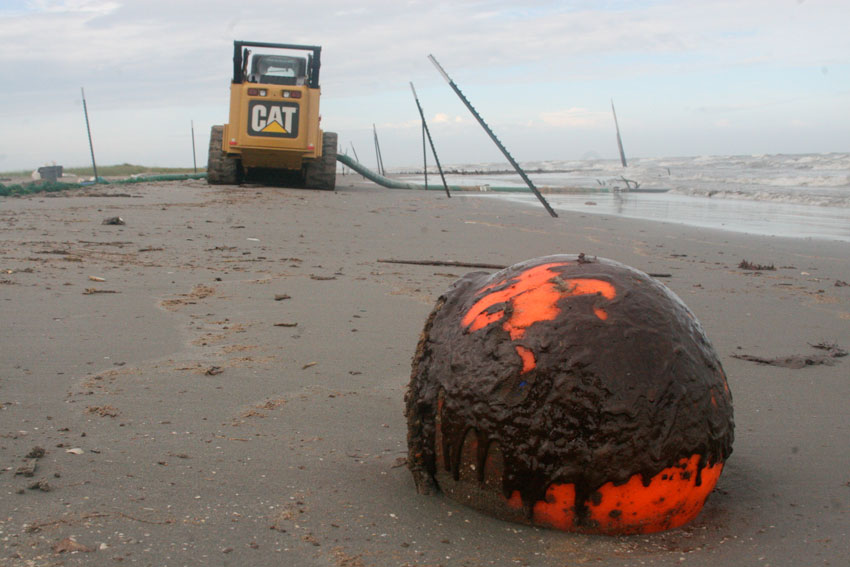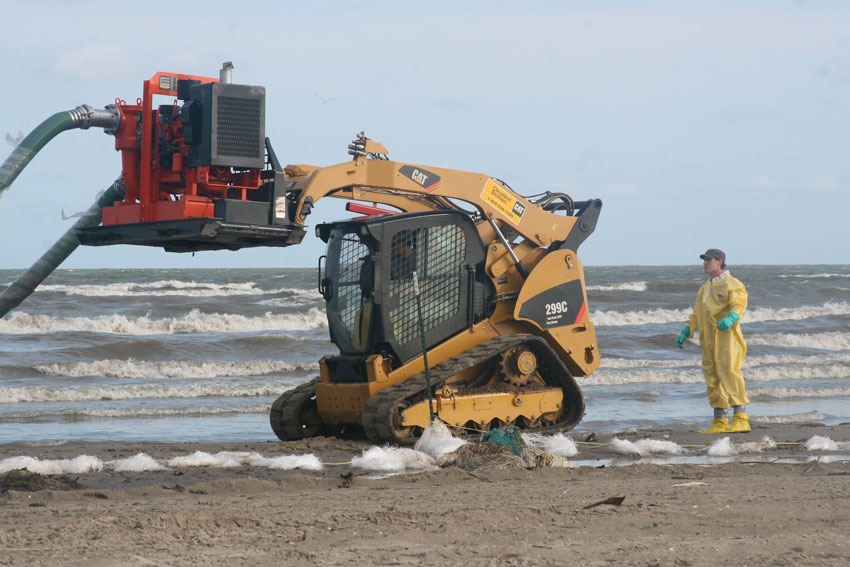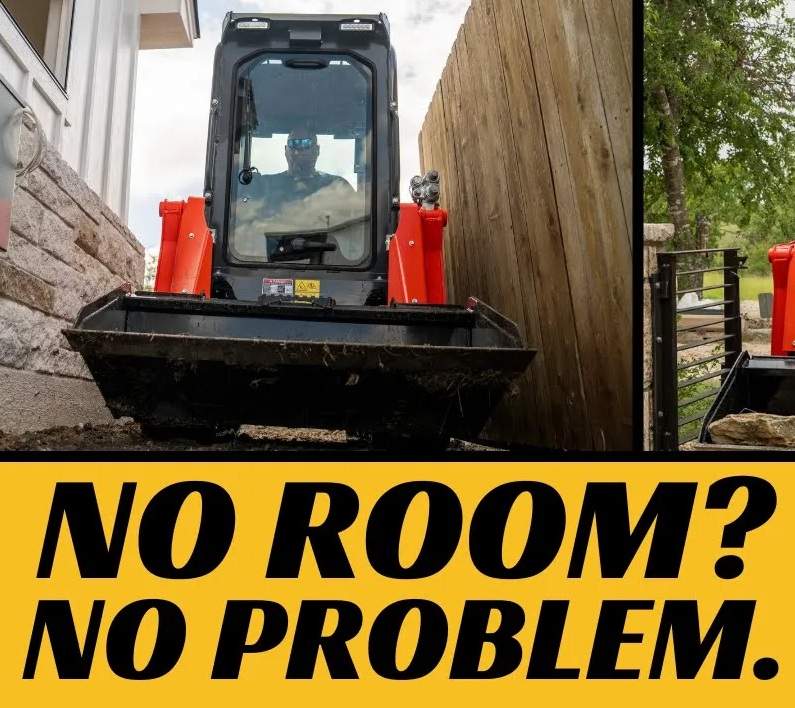Caterpillar Equipment Making Impact on Gulf Oil Clean Up and Coast Protection
 With oil infiltrating the marshes and landing on the beaches along the American shores of the Gulf of Mexico, Caterpillar equipment is helping cover the coast during this ongoing disaster. Under the command of the First Response Team of America (FRTA), a non-profit disaster relief organization that uses compact equipment to help communities rebuild after natural calamities (they were a CE cover story in January 2010), Cat machines are making an impact on the amount of work getting done cleaning up the oil and protecting unspoiled wetlands.
With oil infiltrating the marshes and landing on the beaches along the American shores of the Gulf of Mexico, Caterpillar equipment is helping cover the coast during this ongoing disaster. Under the command of the First Response Team of America (FRTA), a non-profit disaster relief organization that uses compact equipment to help communities rebuild after natural calamities (they were a CE cover story in January 2010), Cat machines are making an impact on the amount of work getting done cleaning up the oil and protecting unspoiled wetlands.
According to FRTA’s president and founder, Tad Agoglia, the situation in Louisiana and elsewhere along the Gulf coast is desperate.
“It’s a race against time,” explained Agoglia about how the tides bring more oil each day. “We are here along the Gulf coast racing against time before the oil spreads to the entire coastline. We’re working 24-hours a day constructing dams in an effort to save wildlife preserves, beaches and marshes. We have to try and make a difference wherever we can to protect our shores.”
Thanks to its Cat equipment, First Response, working hand-in-hand with the Louisiana National Guard, has doubled and in some cases quadrupled the workflow getting done. The team’s Cat 299C compact track loader has been an invaluable workhorse moving pumps, dam material and light towers so the construction of “tiger” dams can go on around the clock.
“Our equipment is so versatile and powerful, nothing stops our operations,” Agoglia said. “The 299 can go into the ocean to position a pump and power through sand. Our 6-in. Godwin Pumps are so much better at handling oil in the water than the 3-inchers the army is using. The oil is clogging the smaller pumps.”
For the first two weeks the team has been along the coast, its main focus was to set up as many “tiger” dams it could. The portable, inflatable dams are stretched out along a beach and filled with seawater. They are formed in such a way to trap the oil in 10- to 20-ft wide strips that allows for efficient oil collection.
The National Guard is also utilizing FRTA’s hovercraft to examine marshes for dam building. As a non-profit entity, FRTA does not charge a dime for its work. All their work is covered by private and corporate donations. They have been fixtures in the United States during tornado season and have recently been working in Haiti helping with recovery operations and in helping communities recover from a series of storms around the Progress Rail facility in Albertville, Ala. For more information about First Response Team of America, go to: https://www.firstresponseteam.org/
Story courtesy of Jim Angell, Cat Folks. Photos Courtesy of First Response Team of America.





